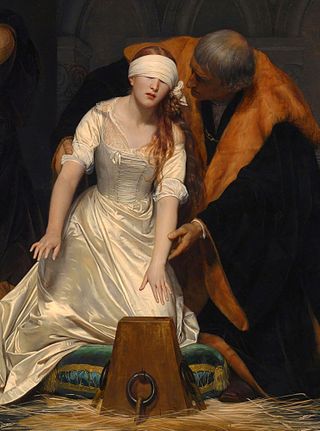Related Research Articles
Baron Wrottesley, of Wrottesley in the County of Stafford, is a title in the Peerage of the United Kingdom. It was created on 11 July 1838 for Sir John Wrottesley, 9th Baronet. He was a Major-General in the Army and also represented Lichfield, Staffordshire and Staffordshire South in House of Commons. The Wrottesley family's original patronymic was 'de Verdun', which meant that the creation of the title Baron Wrottesley represented the third barony created by a branch of the de Verdun family in England. The other two were established by Theobald de Verdun, 1st Baron Verdun of Alton Castle and Sir John de Verdon, 1st Baron Verdon, lord of Brixworth in Northamptonshire and Bressingham in Norfolk.

John Brydges, 1st Baron Chandos was an English courtier, Member of Parliament and later peer. His last name is also sometimes spelt Brugge or Bruges. He was a prominent figure at the English court during the reigns of kings Henry VIII and Edward VI and of Queen Mary I.

Sir Thomas Aston, 1st Baronet was an English politician who sat in the House of Commons in 1640. He fought for the Royalist cause in the English Civil War. The portrait he commissioned from John Souch of his first wife Magdalene Aston on her deathbed is in Manchester Art Gallery. He is known as an apologist for the Church of England.
Sir John Fenwick, 1st Baronet of Wallington and Fenwick, Northumberland, was an English landowner and politician who sat in the House of Commons at various times between 1624 and 1648. He supported the Parliamentary cause in the Civil War.

John Savage, 2nd Earl Rivers was a wealthy English nobleman, politician and Royalist from Cheshire.

The Isham Baronetcy, of Lamport in the County of Northampton, is a title in the Baronetage of England.

There have been four baronetcies created for members of the ancient House of Beaumont, all in the Baronetage of England. All four creations are extinct or dormant.

There have been six baronetcies created for members of the Corbet family, four in the Baronetage of England, one in the Baronetage of Great Britain and one in the Baronetage of the United Kingdom. All creations are extinct. The recipients were descendants of the ancient Norman family of Corbet which held substantial estates in Shropshire including Wattlesborough, Caus Castle, Moreton Corbet Castle and Acton Reynald Hall.
Richard Molyneux, 1st Viscount Molyneux (1594–1636) was an English politician who sat in the House of Commons at various times between 1614 and 1629.

Sir Edward Seymour, 2nd Baronet was an English landowner and politician who sat in the House of Commons between 1601 and 1625. He was an ambassador to Denmark. During the English Civil War, he supported the Royalist cause.
Sir William Russell, 1st Baronet, of Wytley, was an English politician who sat in the House of Commons in 1625. He was an officer in the Royalist army during the English Civil War and, as Governor of Worcester, he refused entry to the Parliamentary cavalry shortly before the Battle of Powick Bridge — the first cavalry skirmish of the Civil War.
Sir Thomas Willys, 1st Baronet of Fen Ditton in Cambridgeshire, was a Member of Parliament for Cambridgeshire and Cambridge. He was also Sheriff of Cambridgeshire and Huntingdonshire.
Captain Sir Thomas Liddell, 1st Baronet (1578–1652) was an English politician, a member of the Liddell family which monopolized the local government of the North of England during the 16th and 17th centuries. He was one of the leading supporters of the Royalist cause in the English Civil War.

Sir Gilbert Hoghton, 2nd Baronet was an English politician who sat in the House of Commons variously between 1614 and 1640. He was a Royalist leader during the English Civil War.
Thomas Chamberlayne may refer to:
Sir Benjamin Ayloffe, 2nd Baronet was an English landowner and politician who sat in the House of Commons from 1661 to 1662. He supported the Royalist cause in the English Civil War.
Sir Edward Bishopp, 2nd Baronet was an English politician who sat in the House of Commons in 1626 and in 1640. He supported the Royalist cause in the English Civil War.
Sir John Reade, 1st Baronet has the unusual distinction of being granted a baronetcy by both Charles I and the Lord Protector Oliver Cromwell.
Sir Thomas Chamberlayne, 2nd Baronet of Wickham and of Northbrooke, Oxfordshire,was the son of Sir Thomas Chamberlayne, 1st Baronet, and probably inherited the baronetcy on the death of his father on 6 October 1643. The title being void under the Act of Parliament then in force, on 6 October 1657 he accepted another baronetcy from the Lord Protector Oliver Cromwell, to whose Attorney General, Edmund Prideaux he was son-in-law. This creation became invalid after the Restoration, while his previous one was reinstated. He died late September or early November 1682. The baronetcy passed to James Chamberlayne, 3rd Baronet.
During the Protectorate period (1653–1659) of the Commonwealth of England, the Lord Protector reserved the power previously held by the monarch to confer knighthoods, baronetcies and peerages.
References
- Cokayne, George Edward, ed. (1902). Complete Baronetage 1625–1649. Vol. 2. Exeter: William Pollard and Co. p. 206.
- Noble, Mark (1787). Memoirs of the Protectoral-House of Cromwell; Deduced from an early period, and continued down to the present time; and, also the families allied to, or descended from them. Vol. 1 (3 ed.). London: G. G. J. and J. Robinson. p. 440.